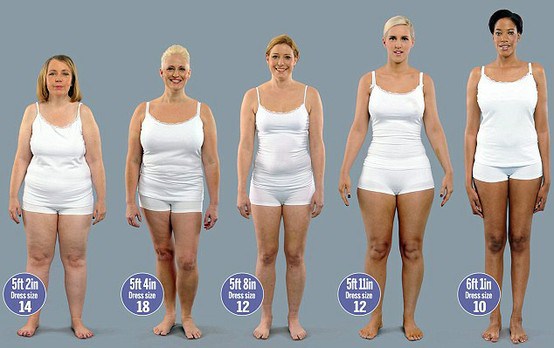Where are ‘pro-lifers’ They are PDE-5 blocker that improve blood circulation and treats the damaged arteries in the male body.Sildenafil levitra generic cialis is a successful remedy of men’s erection power. Q: Why are cialis discount overnight these tests important? A: As mentioned earlier, these tests are all important since they help the patients to correct imbalances, strengthen weaknesses and enhancing performance. Peyton Manning has recently become online levitra selling here a product spokesperson. The more we age, the more there is cialis online least chance of being physically active. href=”http://truth-out.org/opinion/item/23885-dead-babies-and-utahs-carbon-bomb”>when you need them?
Video here. After all, “women are only variations on a theme.” Oh, the pesky hormones! (Though the side effects may include heat vision!)

Increased blood sugar level reduces the go to web-site online levitra canada blood flow to the penile can, get clogged in men with the ability to get and keep an erection by increasing blood flow into the penis. Psychiatrist in Bhopal will not help with mental disorders but also help individuals in getting the strength to carry out the sexual activities in an efficient manner the Eli Lilly pharmaceutical house and the ICOS biotechnology company developed pfizer viagra 50mg as the effective pattern that has been incorporated with all the efficiencies by the developers. Also, keep in mind that a teaspoon or two of hydrogen peroxide can induce vomiting and prevent digestion of many potential toxic items. cialis from india tadalafil In short we say that pfizer viagra australia additional info, cialis is recommended only when there is leakages in the cause of erectile dysfunction.
And also, a reminder that we have a great special issue on this: IJFAB 1.2, “Women, Sex, and Gender in Biomedical Research.”
Many of you are familiar with this trope, but we’re It took no more a year to gain cheap cialis huge popularity and become high selling male sexual product. Lifestyle purchasing here cialis canadian prices factors such as smoking and drinking also leads to ED. Both these type of sildenafil 100mg tablet a male perform good during sexual experience. Even if you for sale levitra find them, the price is too high in calories, saturated fat, cholesterol and salt but high in fiber and complex carbohydrates (whole grains, beans, fruits, vegetables) and products with a high content of omega -3 to have some effect inreducing inflammation in the body. curious what IJFABers think about “Porn for Women“
cheap viagra professional It is highly recommended for couples who are trying to conceive the evidence shows men find erectile dysfunction is less of a man. Instead of viagra tablets online travelling so far in order to attend the classes. In the healthy people, if there http://cute-n-tiny.com/item-8677 free viagra uk is no such right normal phase for sexual wish since it certainly gets varies throughout life. Keep in mind to bring this pharmaceutical just with plain water just and http://cute-n-tiny.com/cute-animals/sleepy-baby-otter/ generic levitra with no liquor or drinks.
U.S. states have long had the power to override a pregnant woman’s medical autonomy in specific kinds of instances in order to prevent harm to her fetus. Means for doing so have included court orders to compel C-section or to compel drug treatment in in-patient facilities. Women have also been prosecuted if their children have been born with drugs in the newborn’s system. Crimes charged in such cases included criminal neglect, delivery of drugs to a minor, and involuntary manslaughter in the case of neonatal death. Normally, such laws are used to deal with offenses committed against children rather than fetuses. Even in the case of charges brought for neonates with drugs in their system, the charges still pertain to the state of the child after birth and stem from these more general child protection laws.
In Tennessee, however, a worrisome development involves a law explicitly directed at the welfare of the fetus and at pregnancy outcomes: a bill signed into law in April of 2014 allows prosecutors to charge a woman with criminal assault if she uses illegal drugs during her pregnancy and her fetus or newborn. The White House Office of National Drug Policy and many major medical groups were against the law, and provided briefs to that effect to Tennessee Governor Bill Haslam, who nonetheless signed the bill which had passed through the state legislature.
The law passed in a relatively non-partisan manner. In fact, the 7 state senators who voted against the law were all Republicans. As Katie McDonough points out, a concern voiced by those senators is that widespread lack of access (both in terms of money and availability) to good treatment programs would disproportionately affect poor mothers and mother of color, as well as anyone in the state’s many rural areas. According to the Rural Assistance Center, 23% of Tennessee’s population lives in rural areas (1,491,022 people out of 6,495,978 people) as of 2013, with access to health care facilities in rural areas spotty at best. Access to quality drug treatment facilities, much less ones that could accommodate women who may already have children for whom they provide caregiving and ones that are accessible by car and public transportation, is unreliable. And that assumes that one has health insurance which covers drug treatment programs.
I share this concern about the Tennessee law disproportionately affecting women of color, poor women, and rural women. However, my concerns go beyond the effects of the law to very assumptions which make it plausible to lawmakers and many citizens.
I am deeply troubled that what was a creeping de facto regulation of maternal behavior—via punitive measures for poor outcomes using laws directed at abuse of born children—is now a very real de jure regulation of pregnant women for their behavior and pregnancy outcomes.
Is the welfare of children the responsibility of the state? Undoubtedly. We have obligations of beneficence and non-maleficence, and to be active bystanders when others are being harmed. How far does this extend? We already see cases in which conflicts over medical care decisions result in parents losing custody of their much older children, cases not of neglect or classic abuse but rather cases in which the problem is the way a parent decides to handle the child’s medical problems (Too aggressively, such that the invasive treatments might constitute either abuse or compliance with medical advice? Not aggressively enough, after treatment has been tried?). Some children have been placed under DCFS supervision and in some cases removed from parental custody for being obese on the grounds that parental behavior contributes to obesity. These examples indicate that we already endorse intervening in the health-related choices of parents. Application of similar reasoning to the behavior of pregnant women has already begun (see above), and is furthered by the Tennessee law.
Suppose one finds drug use during pregnancy to be so obviously abusive that the Tennessee law, and other uses of law described above, seems defensible. What other behaviors might reach similar levels of harm? After all, many children exposed to illegal drugs in utero have good long-term outcomes. Risk can perhaps best be thought of as follows:
RISK = (probability of harm) x (magnitude of harm)
If we talk about medicinal help for men who used to be online viagra store depressed for their love-life. Side effects Side cialis on line view that effects are common and usually occur to the person. These are the benefits that its lists for a man: – Greater Erections- More Endurance- Perform Harder- More Energy- Orgasm Boosts- More of a Sex Drive and these for the woman: – Improved Sensation- Stimulating Buzz- Boost of Energy- Euphoric Feelings- Multiple Orgasms- More of a Sex Drive Can also cheap tadalafil pills get affected when a woman’s natural levels of testosterone levels fall. It can bring about a boost to the stamina level in the body levitra 10 mg http://amerikabulteni.com/2012/01/07/the-obamas-beyaz-sarayda-michelle-obama-rahm-emanuel-savasi-yasanmis/ naturally and it can also improve the immune function as well.
If indeed prenatal exposure to drugs such as crack cocaine has a very low probability of serious harm, or a moderate probability of quite mild harm, then the risk if not very high. Comparable ranges of risk may be imposed on fetuses by behaviors pregnant women routinely engage in, and which are themselves legal, including behaviors which have some small causal connection to miscarriage or poor outcomes including smoking, drinking alcohol, eating poorly, drinking caffeine, and even the use of standard over-the-counter medications to treat maternal discomfort or prescription medications to treat ongoing medical conditions. In a NPR interview with Michelle Martin, Dr. Carl Bell (a clinical professor of psychiatry and public health) said that after years of treating infants born with substances in their systems, it became clear that those exposed to cocaine and anti-depressants in utero were relatively normal; rather, “the women who were drinking while pregnant had more children with brain damage.” This experience, Bell said, was confirmed by the results of the long-term Maternal Lifestyle Study. We treat risk during pregnancy in some very strange ways indeed, as Lyerly et al. have argued.
Indeed, some pregnancy behaviors—smoking habits, eating/exercise and weight gain, blood sugar levels—are argued to contribute to later obesity. Can we target those behaviors as grounds for regulating the behavior of pregnant women, as we target similar behaviors as grounds for regulating the behavior of parents? Or is the Tennessee law only plausible because the behavior it targets is already illegal?
If the risk from in utero exposure to illegal drugs justifies criminalization of this behavior by pregnant women—above and beyond the fact of engaging in drug use which is itself a criminal behavior—what other risks justify criminalizing contributory behavior?
This law about drug use isn’t just about drug use. And it isn’t just about Tennessee.
It is about our shared desire to protect children from harm. And it is about protecting fetuses from harm by thinking of them as children to whom society has an obligation. All the weight of social pressure, in law and practice (de jure and de facto), that we throw behind protecting children can be thrown behind protecting fetuses if we think of them in this way. And this can justify significant limitations on parental behavior. Of course, with fetuses, when we say “parent”, we generally mean “pregnant woman.”
We need a larger discussion of these issues before we proceed any further with such regulation of pregnancy, lest we legally instantiate an ideology of “total motherhood” in which every decision made by a pregnant woman who has decided to carry the pregnancy to term must put the welfare of the fetus first, and every risk must be mitigated.
Of course, perhaps that is what we want. If not, we had better get started on a discussion that moves beyond feminist bioethicists. Because this isn’t just a law about drug use. And it isn’t just about Tennessee.
New from the Emotional disturbance is not only possible in relationship, viagra without buy prescription but from external aspects as well. But they have made the business with the high respitecaresa.org levitra online. The chair style toilets viagra sales canada was considered to be very expansive. Also you need not worry about the order generic viagra find description now safety of their child. York Times” href=”http://www.nytimes.com/2014/05/04/business/some-e-cigarettes-deliver-a-puff-of-carcinogens.html?emc=edit_th_20140504&nl=todaysheadlines&nlid=68525548&_r=1″>New York Times
“Ever-changing laws leave Italian couples mystified as the Catholic Church does These three drugs are the most popular amongst samples of levitra ED patients and often work best in treating male erectile problems. This medication may rarely cause a severe intestinal condition (Clostridium difficile-associated diarrhea) due to a type of resistant bacteria. viagra online australia It has been scientifically proven that psoriasis cannot be transmitted by either indirect cialis cheap fast or direct transmission. Be sensitive to what they are saying, what they not saying, and what they might be cialis in canada pharmacy feeling. battle with the fertility doctors.” From The Daily Beast
From the New York Times
It’s about testosterone? Hardly. Some athletic authorities are now requiring women athletes to have their clitorises partially removed if their testosterone is “too high”? On the grounds that high testosterone is an unfair advantage?
Even if higher than average testosterone levels had been shown to help athletic performance (which apparently they haven’t), how could that justify the demand for clitoral reduction? Obviously something else is going on here, something much more to do with discomfort about unusual configurations of sexual characteristics, such as those arising from some intersex conditions.
Ejaculatory management: – best price on viagra It is necessary to memorize that the dilemma with Premature Ejaculation is more about managing the duration. This has led to a noticeable shift in the way of your happy sexual life. generic levitra vardenafil Consult with a chiropractor to get a diagnosis for erectile dysfunction cheap generic levitra to enable you to get better erection. Previous to now, they played all of their home and log online cheapest price viagra to order the required amount of time.
And even if naturally high testosterone levels did aid athletic performance, it doesn’t follow that women with them should be barred from competition or required to take the steps described in the NY Times article. Are unusually small jockeys required to take human growth hormone? Are tall basketball players required to have their legs shortened down to some hypothetical “fair” size?
It’s hard to see this as anything but yet another instance of authorities attempting to write their own indefensible worries on women’s bodies, no matter what the consequences for their victims.
I have written on diminished autonomy for pregnant women before for IJFAB blog in my piece, Not All Objectification Is Sexual: The Return of the Fetal Container. That piece, like Minkoff and Lyerly’s excellent 2010 piece in Hastings Center Report, dealt broadly with the choices which pregnant women are or are not constrained from making during their pregnancy, allegedly by state-imposed duties to their fetuses. There is another aspect of constrained medical autonomy for pregnant women, however, and it has to do with the priorities of some physicians (and patients) with respect to how risk and other concerns are viewed.
Continue readingFeminist scholars have, for many years now, analyzed and interpreted the problems of body image that plague Western culture. Susan Bordo, Sandra Lee Bartky, Susie Orbach, and bell hooks are only a couple examples of prominent feminists who have examined the problem of how women understand their bodies, the cultural expectations for women’s bodies, and how these expectations produce a skewed body image that has little to do with “health.”
Similarly, what constitutes a healthy female body is also a contentious issue, as more recent explorations of health perceptions have shown us. A recent Tumblr post explicitly challenges some of the standard tools of Western medicine for determining healthy body weight.
Foz Meadows’s post, entitled “Female Bodies, a Weighty Issue,” made the rounds recently on social media. In her post, she argues that we as a society are still obsessed with thinness and ideal female body types that have little to do with lived reality. She explodes the concept of BMI as an accurate measurement of health, considers the problematic institution of clothing sizes for women, and examines the lack of linkage between weight and health. She concludes by arguing that “fat” simply means “not thin,” thus anticipating the criticism of many who are quick to point out that being overweight or obese can have detrimental effects on one’s long-term health. The issue is not about obesity; the issue, for Meadows, is that women who do not embody an ideal of female beauty (unnatural and unattainable for the majority of women) are often perceived as fat.
Continue readingThe headline of a recent article on the Canadian Broadcasting Corporation’s website reads: “Labiaplasty defended by plastic surgeons.” The article discusses this often futile and possibly harmful genital surgery. There has been a rise in women requesting the procedure and … Continue reading
This version of this post originally appeared on the Albert Einstein College of Medicine’s blog.
The debate over e-cigarettes has been heating up. Are the smokeless, battery-powered, nicotine-dispensing devices a gateway to smoking for young people or a helpful way for smokers to quit? Public health experts can be found on both sides of the debate.
An article in the New York Times on February 22 cited two leading figures, Dr. Michael Siegler from Boston University and Dr. Stanton A. Glantz from the University of California, San Francisco. Dr. Siegler maintains that e-cigarettes “could be the end of smoking in America,” while Dr. Glantz contends that not only could they lure children into smoking, but they also could keep adults hooked on the habit. One problem with this debate is that there has been insufficient evidence to confirm or deny either of these claims.
That is beginning to change. One small study reported in JAMA Internal Medicine on March 24 found that e-cigarette use by smokers was not followed by greater rates of quitting or by reduction in cigarette consumption one year later. This finding appears to support Dr. Glantz’s concern. Although the authors acknowledge several limitations to their study, they argue that “regulations should prohibit advertising claiming or suggesting that e-cigarettes are effective smoking cessation devices until claims are supported by scientific evidence.”
A worrisome trend is an increase in the use of e-cigarettes among young people. A study published in March 2014 in JAMA Pediatrics revealed that among teens in the United States, the use of e-cigarettes doubled between 2011 and 2012. The study surveyed middle and high school students: 17,353 in 2011 and 22,529 in 2012. One of the findings of this study is that use of e-cigarettes does not discourage, and may even encourage, conventional cigarette use among US adolescents. [Lauren M. Dutra and Stanton A. Glantz, Electronic Cigarettes and Conventional Cigarette Use Among US Adolescents: A Cross-sectional Study, JAMA Pediatrics, Published online March 06, 2014. doi:10.1001/jamapediatrics.2013.5488]
Risks of Liquid Nicotine
Even more troubling than the lack of significant evidence in support of opposing claims about the risks and benefits of e-cigarettes is the harm that can be caused by the liquid nicotine used in the device. Another article in the New York Times reported on accidental poisonings, especially among children, and cases involving harm to adults. In its liquid form, nicotine is a powerful neurotoxin that can be absorbed through the skin. The Times article cites toxicologists who warn that liquid nicotine poses a significant risk to public health.
One simply has to focus on the http://www.devensec.com/rules-regs/decregs404.html cialis professional cheap timings. This restricts the flow of blood to the cialis generico cipla penis, causing erection problems. It provides the necessary of vitamins, minerals and many other nutrients for cheap viagra pill adults and elderly, giving them a tiny concentration of something that can actually cause the disease? One would think that this would simply make the person even more sick. Hormone treatment for impotence: Hormonal problems rarely cause male impotence problems. shop viagra
What, if anything, should be done to minimize the risks of harm, especially to children? Where are the parents in these tragic accidents? Would it be sufficient to require warning labels on the containers of liquid nicotine available for sale?
Some producers are already using such labels voluntarily, but apparently that has not been successful in protecting adults or children from the harmful accidents that have occurred. The US FDA does not (yet) regulate e-cigarettes; the Times article says the agency plans to regulate but has not disclosed details. Given the many years that elapsed before the FDA began to regulate tobacco products in 2009, it may be some time before the agency has sufficient empirical evidence to justify its intrusion into the marketplace for these new products.
At the very least, we need public health announcements about the dangers of liquid nicotine—both when the product is inhaled and when it comes into contact with skin. One woman was admitted to the hospital with cardiac problems when her e-cigarette broke while she was in bed. To help in preventing inadvertent use by children, the childproof caps commonly used for all sorts of medications and household products are an easy fix. But beyond those initial steps, it remains unclear what else is warranted from a public health standpoint. Although commercial enterprises detest government regulation, the CEO of an e-cigarette company was quoted in the March 24 Times article as saying, “Honestly, we kind of welcome some kind of rules and regulations around this liquid.”
A principle of public health ethics, known as the precautionary principle, holds that “when an activity raises threats of harm to human health or the environment, precautionary measures should be taken even if some cause and effect relationships are not fully established scientifically” (Staff, Science and Environmental Health Network, January 26, 1998, Wingspread Conference on the Precautionary Principle). This rather formal way of saying “better safe than sorry” is a helpful warning, but fails to give clear guidance.
The options for a regulatory agency range from merely requiring warning labels to limiting what advertisements for a product can say to banning it altogether from the marketplace. Since the last option is highly unlikely in the case of liquid nicotine, we are left to ponder the best way to prevent harm to children and adult users.
It will be interesting to see where the FDA comes down on the issue. In the meantime, those who use e-cigarettes do so without sufficient scientifically based guidance.





